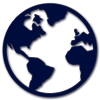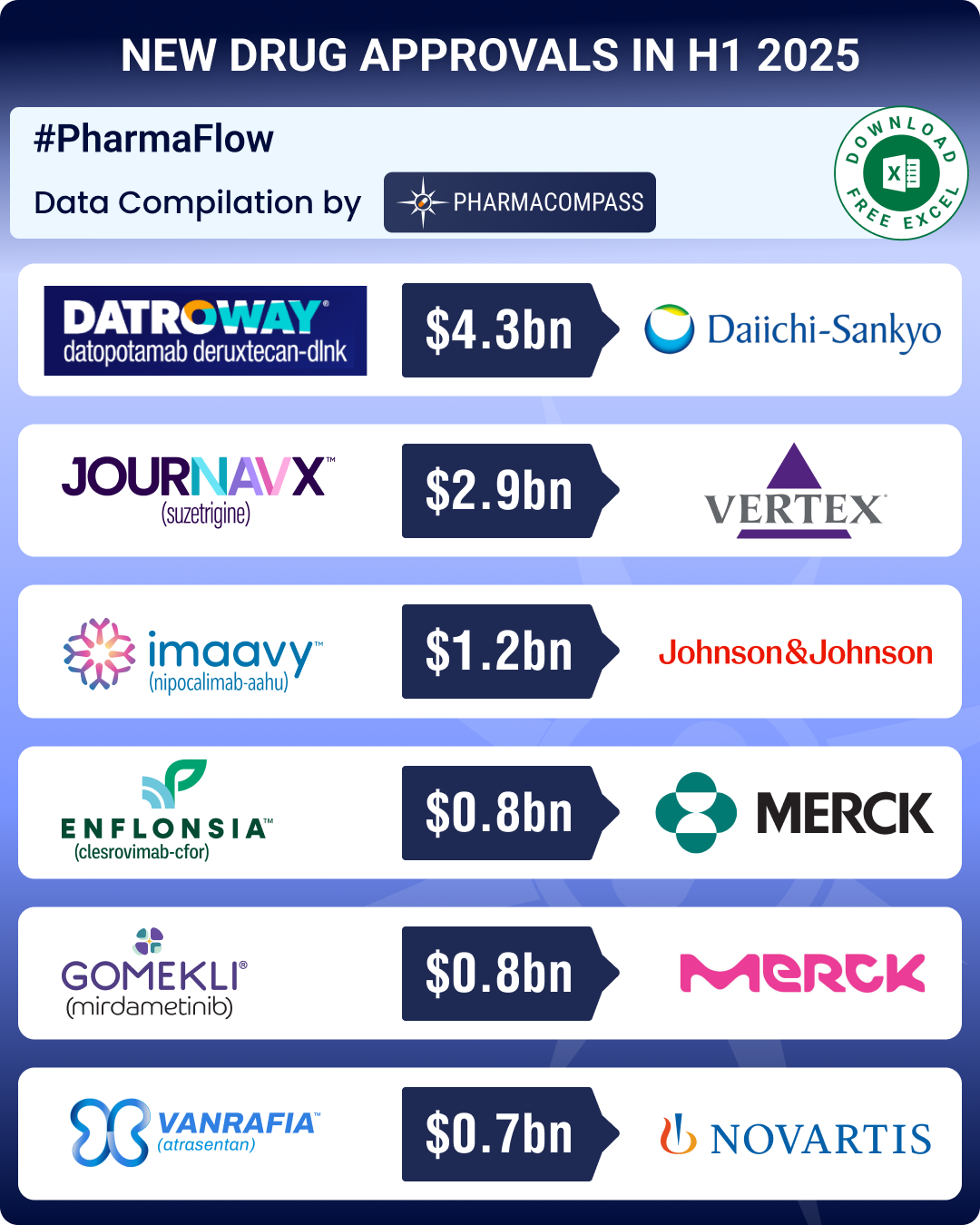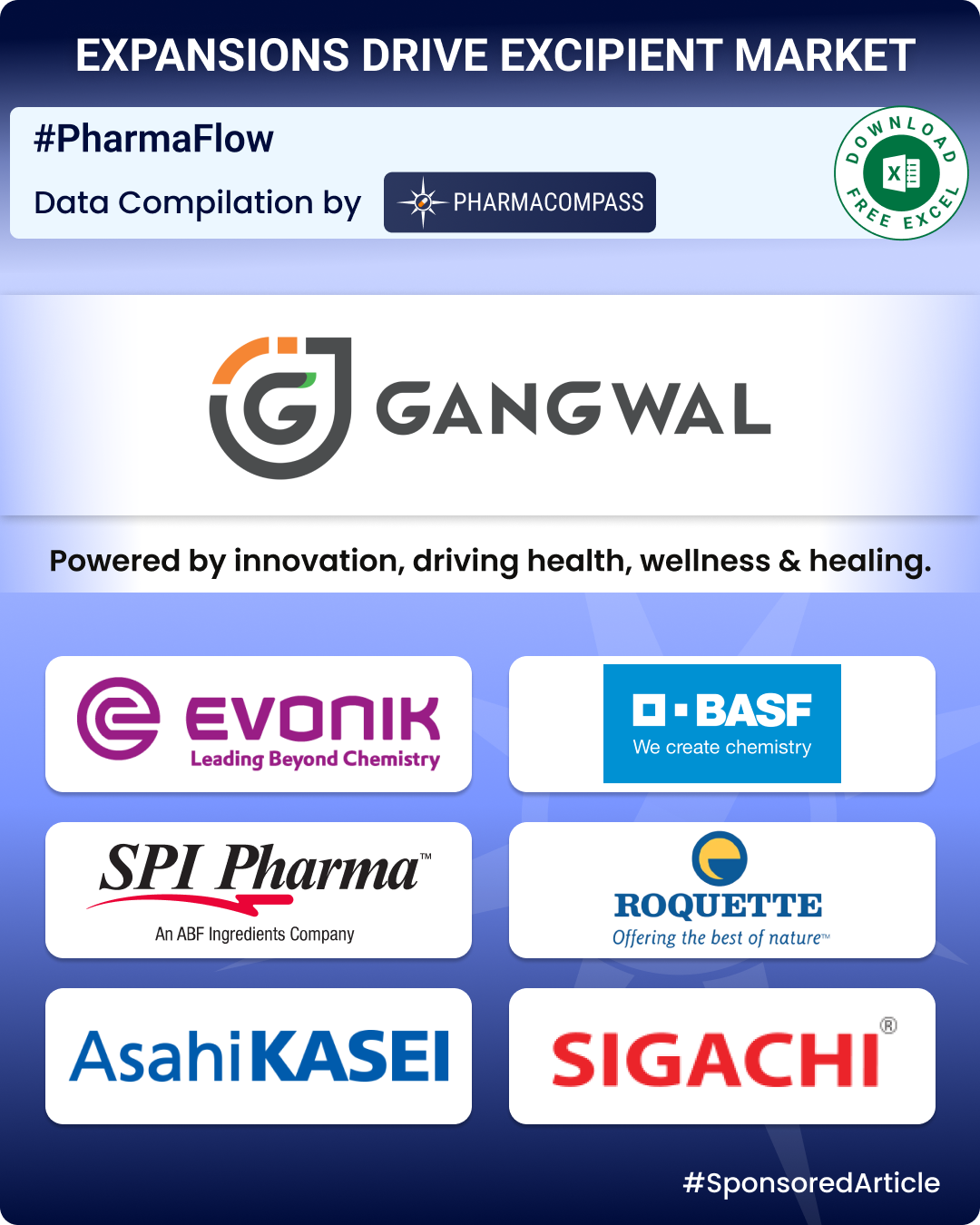 AbbVie Inc
AbbVie Inc
09 Dec 2025
// GLOBENEWSWIRE
05 Dec 2025
// FIERCE PHARMA
01 Dec 2025
// PR NEWSWIRE

About
Industry Trade Show
Not Confirmed
10-12 December, 2025
Industry Trade Show
Not Confirmed
06-10 December, 2025
CPhI Middle EastCPhI Middle East
Industry Trade Show
Not Confirmed
08-10 December, 2025
CONTACT DETAILS




Events
Webinars & Exhibitions
Industry Trade Show
Not Confirmed
10-12 December, 2025
Industry Trade Show
Not Confirmed
06-10 December, 2025
CPhI Middle EastCPhI Middle East
Industry Trade Show
Not Confirmed
08-10 December, 2025
CORPORATE CONTENT #SupplierSpotlight
https://www.pharmacompass.com/radio-compass-blog/fda-approvals-drop-24-in-h1-2025-gsk-s-uti-med-vertex-s-non-opioid-painkiller-lead-pack-of-first-in-class-meds
https://www.pharmacompass.com/radio-compass-blog/j-j-s-intra-cellular-buyout-bms-oncology-gambit-sanofi-s-blueprint-acquisition-drive-mega-deals-in-h1-2025
https://www.pharmacompass.com/radio-compass-blog/top-pharma-companies-drugs-in-2024-merck-s-keytruda-maintains-top-spot-as-novo-s-semaglutide-nips-at-its-heels
https://www.pharmacompass.com/radio-compass-blog/molecular-glue-degraders-lilly-abbvie-sign-billion-dollar-deals-bms-leads-with-three-late-stage-drugs
https://www.pharmacompass.com/radio-compass-blog/top-first-in-class-drug-candidates-of-2025-ionis-donidalorsen-sanofi-s-fitusiran-cytokinetics-aficamten-await-fda-approval
https://www.pharmacompass.com/radio-compass-blog/fda-okays-50-new-drugs-in-2024-bms-cobenfy-lilly-s-kisunla-lead-pack-of-breakthrough-therapies
https://www.pharmacompass.com/radio-compass-blog/fda-s-landmark-approvals-of-bms-schizo-med-madrigal-s-mash-drug-us-16-5-bn-catalent-buyout-make-it-to-top-10-news-of-2024
https://www.pharmacompass.com/radio-compass-blog/chinese-fda-registered-generic-facilities-gain-steam-india-maintains-lead-with-396-facilities
https://www.pharmacompass.com/radio-compass-blog/novartis-gsk-sanofi-bms-shell-out-over-us-10-bn-in-dealmaking-as-mid-size-deals-take-centerstage-in-2024
https://www.pharmacompass.com/radio-compass-blog/fda-s-june-2024-list-of-off-patent-off-exclusivity-drugs-sees-rise-in-cancer-hiv-treatments
https://www.pharmacompass.com/radio-compass-blog/fda-approves-record-eight-biosimilars-in-h1-2024-okays-first-interchangeable-biosimilars-for-eylea

09 Dec 2025
// GLOBENEWSWIRE
https://www.globenewswire.com/news-release/2025/12/08/3201201/0/en/OSE-Immunotherapeutics-Announces-Strategic-Amendment-to-AbbVie-s-Partnership-on-ABBV-230-Development.html

05 Dec 2025
// FIERCE PHARMA
https://www.fiercepharma.com/marketing/abbvie-revs-skyrizi-spending-top-tv-ad-totals-november-edging-out-jjs-tremfya

01 Dec 2025
// PR NEWSWIRE
https://www.prnewswire.com/news-releases/abbvie-to-present-phase-3-eclipse-data-demonstrating-atogepant-aquipta-superiority-over-placebo-in-achieving-pain-freedom-for-the-acute-treatment-of-migraine-at-the-19th-european-headache-congress-302628656.html

28 Nov 2025
// GLOBENEWSWIRE
https://www.globenewswire.com/news-release/2025/11/28/3196206/0/en/SKYRIZI-risankizumab-Receives-Positive-Reimbursement-Recommendation-by-Canada-s-Drug-Agency-for-Ulcerative-Colitis-and-AbbVie-Concludes-Letter-of-Intent-with-the-pan-Canadian-Pharm.html

26 Nov 2025
// GLOBENEWSWIRE
https://www.globenewswire.com/news-release/2025/11/25/3194446/0/en/AbbVie-and-adMare-BioInnovations-Foster-Life-Sciences-Innovation-with-the-Launch-of-the-AbbVie-Biotech-Innovators-Award-in-Quebec.html

25 Nov 2025
// FIERCE PHARMA
https://www.fiercepharma.com/marketing/abbvie-short-film-showcases-second-winds-life-after-cll-diagnosis
ABOUT THIS PAGE
AbbVie Inc is a supplier offers 21 products (APIs, Excipients or Intermediates).
Find a price of Cyclosporine bulk with DMF, CEP offered by AbbVie Inc
Find a price of Erythromycin bulk with DMF, CEP offered by AbbVie Inc
Find a price of Biperiden Hydrochloride bulk with CEP offered by AbbVie Inc
Find a price of Butorphanol Tartrate bulk with DMF offered by AbbVie Inc
Find a price of Erythromycin Ethyl Succinate bulk with DMF offered by AbbVie Inc
Find a price of Erythromycin Stearate bulk with DMF offered by AbbVie Inc
Find a price of Isoflurane bulk with CEP offered by AbbVie Inc
Find a price of Paricalcitol bulk with DMF offered by AbbVie Inc
Find a price of Ritonavir bulk with CEP offered by AbbVie Inc
Find a price of Atogepant bulk offered by AbbVie Inc
Find a price of Divalproex Sodium bulk offered by AbbVie Inc
Find a price of Elagolix Sodium bulk offered by AbbVie Inc
Find a price of Enflurane bulk offered by AbbVie Inc
Find a price of Erythromycin Thiocyanate bulk offered by AbbVie Inc
Find a price of Foscarbidopa bulk offered by AbbVie Inc
Find a price of Foslevodopa bulk offered by AbbVie Inc
Find a price of Glecaprevir bulk offered by AbbVie Inc
Find a price of Levothyroxine Sodium bulk offered by AbbVie Inc
Find a price of Pibrentasvir bulk offered by AbbVie Inc
Find a price of Terazosin HCl bulk offered by AbbVie Inc
Find a price of Venetoclax bulk offered by AbbVie Inc





